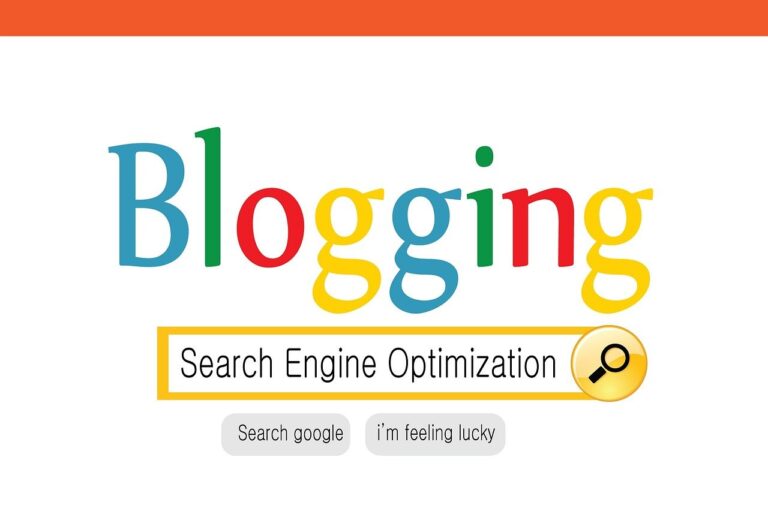The Power of Blogging is a powerful tool for sharing your expertise and connecting with potential clients. By consistently creating valuable content, you can establish yourself as an authority in your field and build trust with your audience. Regular blogging boosts your credibility and increases the likelihood that people will listen to and believe your insights.

Writing blog posts allows you to showcase your knowledge and address common questions or concerns your target audience may have. This not only helps potential clients find you through search engines but also demonstrates your ability to solve their problems. By providing in-depth answers and customer-centric content, you can improve your visibility and foster long-term relationships with clients.
To maximize the impact of your blog, focus on creating engaging titles that grab readers’ attention and encourage them to click through from social media.
Additionally, optimizing your content for search engines can help you reach a wider audience and attract more potential clients to your practice.
Key Takeaways
- Regular blogging establishes your expertise and builds trust with potential clients
- Valuable, customer-centric content addresses audience needs and improves visibility
- Engaging titles and SEO optimization expand your reach and attract more readers
The Benefits Of Blogging For Holistic Health Practitioners
Blogging offers holistic health practitioners powerful ways to connect with clients and grow their practice. It allows you to share your unique expertise, build trust, and increase your visibility online.
Building Trust And Credibility
Consistent, high-quality blog content helps establish you as a trusted authority in holistic health. By sharing valuable insights and practical advice, you demonstrate your commitment to helping clients. This builds credibility and rapport before they even meet you.
Regular blogging allows you to showcase your approach and philosophy. You can address common client concerns and questions, positioning yourself as a knowledgeable guide. This transparency helps potential clients feel more comfortable reaching out.
Personal stories and case studies (with client permission) can illustrate your methods in action. This gives readers a clearer picture of what working with you might be like. Authenticity in your writing voice further strengthens the connection with your audience.
Showcasing Expertise And Knowledge
Your blog serves as a platform to highlight your unique skills and specialties within holistic health. You can dive deep into specific modalities or treatment approaches you offer. This depth of content signals your expertise to both clients and other professionals.
Sharing well-researched, informative posts demonstrates your ongoing education and commitment to your field. You can break down complex health topics into accessible language for your readers. This translation of knowledge is a valuable service in itself.
Consider creating content series on key areas of your practice. For example:
- A multi-part guide to natural stress relief techniques
- An exploration of different healing modalities you incorporate
- Seasonal wellness tips based on your holistic approach
Enhancing Online Visibility
A regularly updated blog significantly boosts your website’s search engine optimization (SEO). This means potential clients are more likely to find you when searching for holistic health solutions in your area. Each blog post creates a new entry point to your website.
Incorporate relevant keywords naturally throughout your posts. Focus on terms your ideal clients might use when seeking help. This could include specific health concerns, treatment modalities, or location-based searches.
Share your blog posts on social media platforms to extend your reach. This creates opportunities for engagement and can drive more traffic to your website. Encourage readers to share your content if they find it helpful.
Creating Engaging and Valuable Content
Crafting content that resonates with your audience is crucial for successful blogging. Focus on delivering genuine value through well-researched, informative, and captivating posts that address your readers’ needs and interests.
Identifying Your Target Audience
Understanding your audience is the foundation of creating engaging content. Research your ideal clients’ demographics, interests, and pain points. Use tools like Google Analytics and social media insights to gather data on your current readers.
Create detailed buyer personas to guide your content strategy. Consider factors such as age, profession, goals, and challenges. This information will help you tailor your writing style and topics to match your audience’s preferences.
Engage with your readers through comments, social media, and email surveys to gain deeper insights. Pay attention to the questions they ask and the problems they face. Use this feedback to refine your understanding of their needs and preferences.
Choosing Relevant Topics
Select topics that align with your expertise and your audience’s interests. Stay up-to-date with industry trends and monitor popular questions in your niche. Use tools like Google Trends, BuzzSumo, or Answer the Public to discover what people are searching for.
Create a content calendar to plan your posts in advance. Balance evergreen content with timely, trending topics. Aim for a mix of beginner-friendly and advanced posts to cater to different segments of your audience.
Consider repurposing successful content into different formats. For example, transform a popular blog post into a video, infographic, or podcast episode to reach a wider audience and reinforce key messages.
Writing Compelling Headlines
Craft headlines that grab attention and accurately reflect your content. Use power words, numbers, and action verbs to make your titles more engaging. For example:
- “5 Proven Strategies to Double Your Productivity”
- “Transform Your Business with These Expert Tips”
- “The Ultimate Guide to Mastering Time Management”
Keep your headlines concise, ideally under 60 characters for optimal SEO performance. Use tools like CoSchedule’s Headline Analyzer to evaluate and improve your titles.
Test different headline variations using A/B testing to see which ones resonate most with your audience. Pay attention to which types of headlines generate the most clicks and engagement.
Incorporating Storytelling Techniques
Use storytelling to make your content more relatable and memorable. Share personal experiences, case studies, or client success stories to illustrate your points. This approach helps readers connect emotionally with your content and visualize the application of your advice.
Structure your posts with a clear beginning, middle, and end. Start with a hook that draws readers in, develop your main points in the body, and conclude with a strong call-to-action or key takeaway.
Use vivid language and descriptive details to paint a picture in your readers’ minds. Incorporate dialogue, sensory details, and emotional elements to make your stories more engaging. This technique helps bring your content to life and keeps readers invested in your message.
Optimizing Blog Posts For Search Engines
Effective search engine optimization can significantly boost your blog’s visibility and attract more potential clients. By implementing key SEO strategies, you’ll improve your chances of ranking higher in search results and reaching your target audience.
Understanding SEO Basics
SEO involves optimizing your blog posts to rank higher in search engine results pages (SERPs). Focus on creating high-quality, relevant content that addresses your audience’s needs. Search engines prioritize content that provides value to users.
Key SEO elements include:
- Title tags
- Meta descriptions
- Header tags (H1, H2, H3)
- URL structure
- Image alt text
Regularly update your content to keep it fresh and relevant. This signals to search engines that your site is active and valuable.
Using Keywords Effectively
Incorporating relevant keywords is crucial for SEO success. Research and select keywords that your target audience is likely to use when searching for information related to your expertise.
Use keywords naturally throughout your content:
- In the title
- Within the first paragraph
- In subheadings
- Throughout the body text
Avoid keyword stuffing, as it can negatively impact your rankings. Aim for a keyword density of 1-2% to maintain readability and relevance.
Consider using long-tail keywords to target specific queries and attract more qualified traffic.
Structuring Posts For Readability
Well-structured content improves user experience and helps search engines understand your post’s organization. Use clear headings and subheadings to break up your content into logical sections.
Tips for improving readability:
- Use short paragraphs (1-3 sentences)
- Include bullet points and numbered lists
- Add relevant images and infographics
- Use white space effectively
Optimize your blog post title by including your main keyword and making it compelling for readers. Aim for titles between 50-60 characters to ensure they display properly in search results.
Leveraging Internal And External Links
Strategic linking improves your blog’s SEO and provides value to your readers. Internal linking helps search engines understand your site structure and encourages visitors to explore more of your content.
Best practices for linking:
- Use descriptive anchor text
- Link to relevant, high-quality pages
- Avoid excessive linking
- Update broken links regularly
External links to authoritative sources can enhance your content’s credibility and provide additional value to your readers. Be selective with outbound links, ensuring they complement your content without distracting from your expertise.
Promoting Your Blog To Attract Clients

Effective blog promotion is crucial for attracting potential clients and showcasing your expertise. A well-executed promotion strategy can significantly increase your blog’s visibility and reach, ultimately leading to more client opportunities.
Utilizing Social Media Platforms
Social media is a powerful tool for promoting your blog content. Share your blog posts on various platforms, and consider using different formats like images, videos, or infographics to catch your audience’s attention.
Tracking And Analyzing Blog Performance
Regularly monitor your blog’s performance to understand what content resonates with your audience and drives conversions. Use analytics tools to track key metrics and inform your content strategy.
Important metrics to track:
- Page views and time on page
- Bounce rate
- Conversion rate
- Click-through rate on CTAs
Analyze this data to identify top-performing posts and topics. Use these insights to create more content that appeals to your target audience and drives conversions. Continuously refine your approach based on what the data reveals about your readers’ preferences and behaviors.
Conclusion

Blogging empowers you to showcase your expertise and connect with potential clients. By crafting compelling content, you can establish yourself as an authority in your field.
Remember to end each post with a strong call to action. This guides readers on what to do next, whether it’s subscribing to your newsletter or booking a consultation.
Experiment with different conclusion styles to find what resonates with your audience. You might try summarizing key points, posing thought-provoking questions, or inviting readers to share your content.
Consistency is key in blogging. Set a regular posting schedule and stick to it. This helps build anticipation and keeps your audience engaged.
Don’t forget to optimize your posts for search engines. Use relevant keywords naturally throughout your content to improve visibility.
Engage with your readers by responding to comments and encouraging discussion. This fosters a sense of community around your blog.
By implementing these strategies, you’ll create a powerful blogging presence that attracts clients and solidifies your position as an industry expert.
Frequently Asked Questions

Blogging presents opportunities and challenges for businesses and individuals. Key strategies can boost engagement, drive growth, and generate income while maintaining quality content and visibility.
What strategies can increase engagement on my blog?
Encourage comments by ending posts with thought-provoking questions. Respond promptly to foster discussions.
Use how-to articles and reviews to share expertise and address common customer questions.
Create visually appealing content with images, infographics, and videos. Organize information with bullet points and subheadings for easy scanning. Write in a conversational tone to connect with readers.
How can content marketing through blogging drive business growth?
Establish yourself as an industry authority by consistently producing high-quality, informative content. This builds trust with potential clients and positions you as a go-to resource.
Address frequently asked questions from your customers in detailed blog posts. This demonstrates your expertise and provides value, encouraging readers to engage with your business.
What are effective ways to monetize a blog?
Offer sponsored content, where you partner with brands to create posts featuring their products or services. Implement affiliate marketing by recommending products and earning commissions on sales.
Create and sell digital products like e-books, courses, or templates related to your blog’s niche. Offer consulting services or coaching based on your expertise showcased in your blog content.
How does one consistently generate fresh and relevant content for blog readers?
Stay current with industry trends and news to inspire new topics. Conduct keyword research to understand what your audience is searching for online.
Repurpose existing content into different formats, such as turning a popular post into an infographic or video.
Interview experts in your field to provide fresh perspectives and valuable insights to your readers.
What are the best practices for SEO in blogging to enhance visibility?
Use relevant keywords naturally throughout your content, including in titles, headings, and meta descriptions. Create high-quality, in-depth content that thoroughly covers your chosen topics.
Optimize images with descriptive alt text and file names. Build internal links between related posts to improve site structure and keep readers engaged.
Can social media be integrated with blogging to amplify reach?
Share your blog posts across relevant social media platforms to increase visibility.
Create teaser content or snippets to entice followers to click through to your full blog post.
Encourage readers to share your content by adding social sharing buttons to your blog.
Engage with your audience on social media by responding to comments and participating in discussions related to your blog topics.






